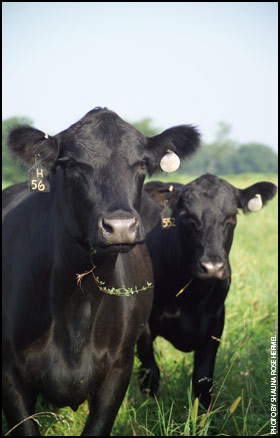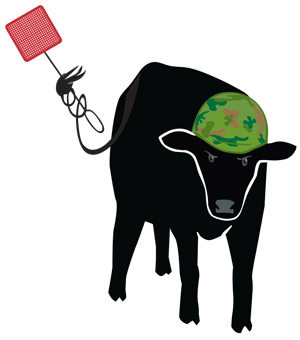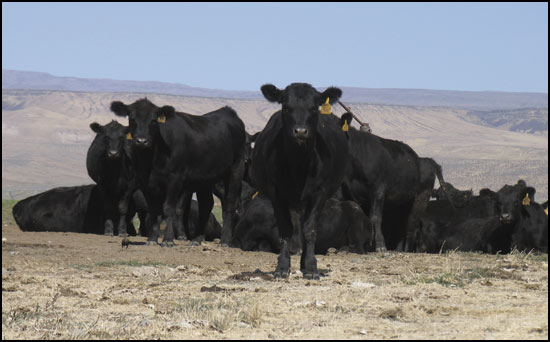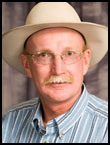MANAGEMENT...
Rebreeding Reminders
First- and second-calf females need to be managed closely in spring and summer to avoid a large number of open females in the fall and to reduce dependence on high-cost bred replacements, says Jason Ahola, an Extension beef specialist with the University of Idaho.
He adds that ensuring young females rebreed can help maximize the number of calves to be sold during 2010 and beyond - a time when calf prices are forecast to be rebounding.
Ahola offers a list of management reminders that may help producers improve the reproductive performance of their young beef cows. Read more.
Survive Summertime Heat
The summer sun is wreaking havoc for some producers across the country. High temperatures, combined with high humidity in some areas and a lack of moisture in others, makes for stressful environments for both cattle and humans.
The following resources offer producers help in keeping animals productive - and safe - during seasonal heat waves and drought conditions.
• An Update on U.S. Pasture and Range Conditions
• Watch Cattle for Heat Stress in Summer's Heat
• Good Management Can Reduce Incidence of Heat Stress
• Some Producers Forced to Sell in Texas Drought
• Impact of Heat Stress on Cattle
• Susceptibility to Heat Stress
 Shoo, Fly!
Shoo, Fly!
Flies are more than an annoyance; they could be costing you dollars in lost performance and disease.
Swat! You may have gotten that one, or just left a handprint on your arm where you swatted and missed. As annoying as flies can be to humans, livestock have to live in the insects' breeding and feeding grounds. The pests could be spreading disease, causing losses in milk and feed efficiency, annoying cattle to the point they quit eating, and ultimately decreasing your bottom line. While there is no 100% sure-fire way to get rid of flies, there are steps you can take to reduce their impact on your herd. Read More.

When Sooner is Better
Early weaning and drought strategies have been married in the marketplace of ideas. It's a union of convenience — perhaps the easiest place to track benefits, and almost universally accepted.
Most experts agree forage shortages provide the perfect time to move weaning up, but divorcing those ideas could help producers explore other angles for their herds.
"Drought is just one example of a broader situation that lends itself to early weaning strategies," says Steve Loerch, animal scientist at Ohio State University (OSU).
He suggests cattlemen faced with high land values, stocking for the "summer slump" or feeding heavy-milking herds take a second look at the practice.
"Any time you have scarce pasture, it's appropriate to contemplate early weaning, and the benefits on the cow side will be realized," Loerch says. Those advantages include higher body condition score (BCS), reduced forage consumption and lower winter feed costs. Read more.

Kris Ringwall
Beef Talk
Capturing value is the name of the beef game.
Beef production is about value. There are many components and obviously many ways to raise beef, but the bottom line is value. The product has to have value.
But does this effort pay off? Well, as with many things, it is not always easy to know what is the exact driving force in the industry, but it is interesting to see the spread in value that producers managed to achieve in 2008. Read more.
Low-Stress Stockmanship
A common misconception is that "low-stress" must mean "no pressure." That is absolutely false. Cattle, like all other animals, respond to appropriate application and release of pressure. There are times when significant pressure must be applied to get the animals to move how and when you need. Pressure, used appropriately, does not cause long-term, harmful stress. Read more.
Livestock Indemnity Available
Agriculture Secretary Tom Vilsack announced July 7 that eligible ranchers and livestock producers can begin applying for benefits under the provisions of the Livestock Indemnity Program in the 2008 Farm Bill on July 13.
The Livestock Indemnity Program (LIP) provides assistance to producers for livestock deaths that result from disaster. LIP compensates livestock owners and contract growers for livestock death losses in excess of normal mortality due to adverse weather, including losses due to hurricanes, floods, blizzards, disease, wildfires, extreme heat and extreme cold. Eligible losses must have occurred on or after Jan. 1, 2008, and before Oct. 1, 2011.
Using funds from the Agricultural Disaster Relief Trust Fund established under section 902 of the Trade Act of 1974, the program is administered by the USDA Farm Service Agency (FSA). For more information on available supplemental disaster assistance programs, visit a local FSA office or www.fsa.usda.gov.

Ron Torell
Back to Basics
Grass-fed, natural, organic, hormone-
and antibiotic-free
As a beef producer, did the title of this article catch your attention? It gets my blood flowing for several reasons.
First, all cattle are grass-fed! That’s what beef producers do — raise cattle on grass. Second, practically all cattle are raised in harmony with Mother Nature in a natural setting, harvesting organic material. Third, no cattle are hormone-free. Essentially, the same measurable levels of hormones are present in all cattle, implanted or not. Read more.
Declining Farm Animal Research
Funding for research involving domestic farm animals as research models pales in comparison with funding allotted for research using other types of animal models, such as mice, according to a release issued by Michigan State University (MSU).
MSU professors and colleagues reported in an issue of Science that the continuing decline in federal funding for animal and biomedical research jeopardizes animal science studies. The researchers noted that, though the economic value of livestock and poultry in the United States exceeds $132 billion, only 0.04% ($32.15 million) of the U.S. Department of Agriculture (USDA) budget was allocated to its competitive grants programs for research involving farm animals.
The article's authors warn that a continuing decline in animal agriculture research funding jeopardizes the entire field of animal science, right down to the producer level.




